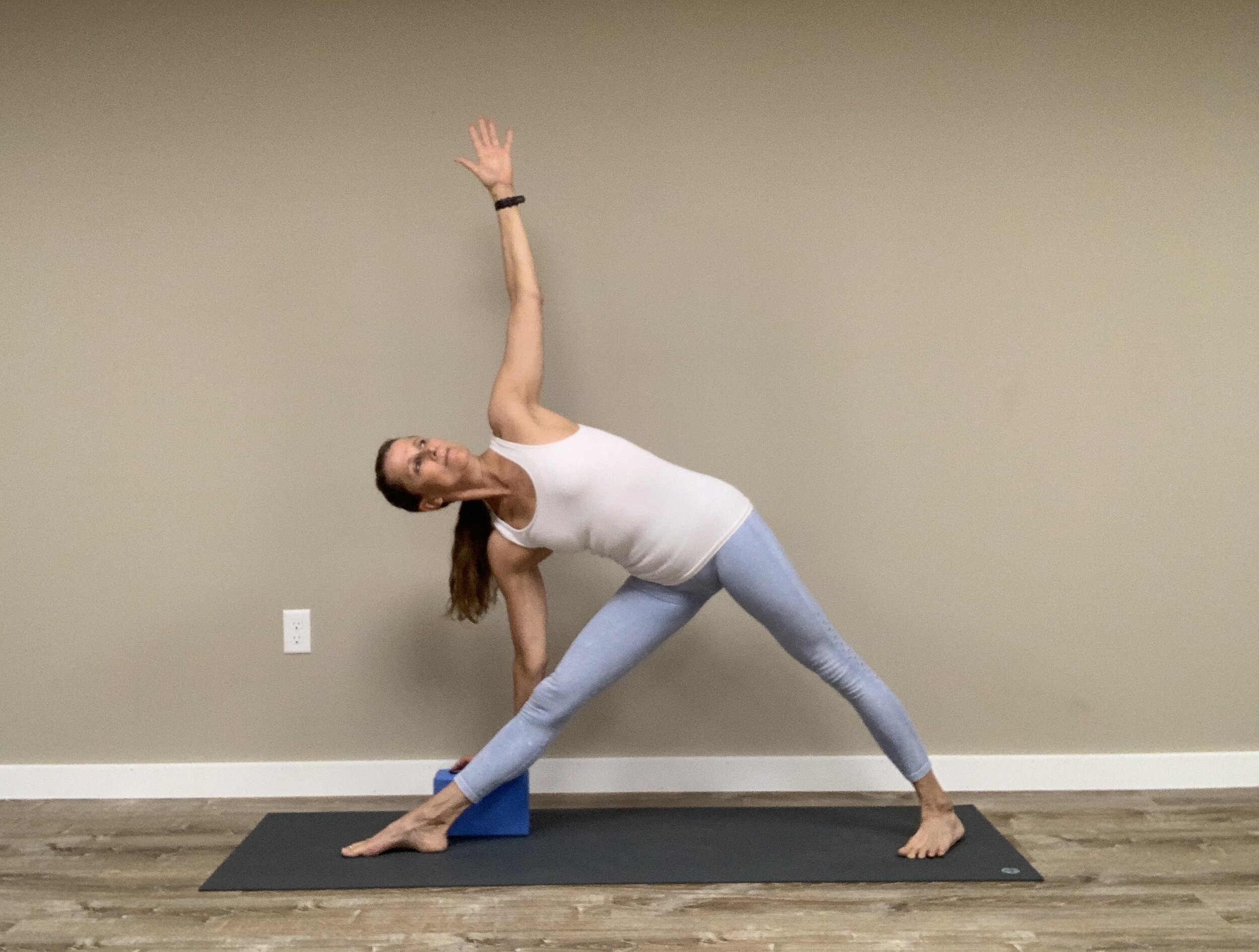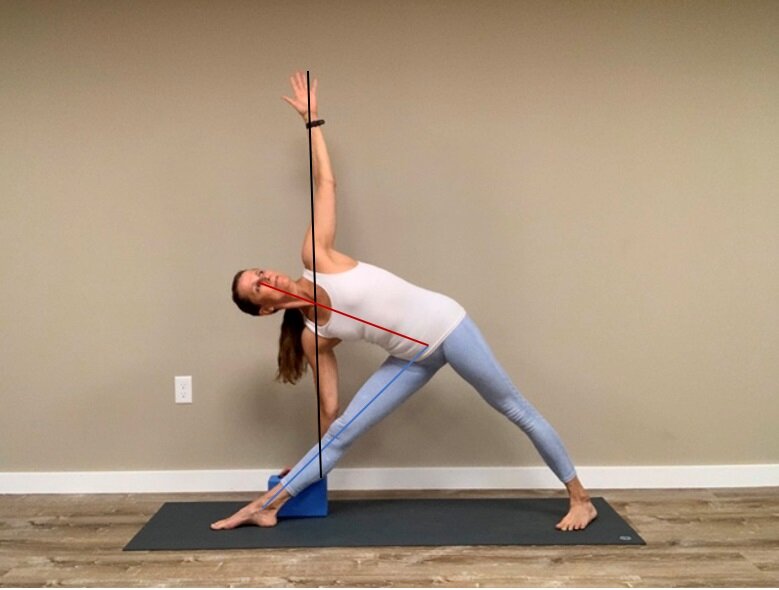The mind is naturally drawn to effortless action, while it has to be willfully drawn towards the strenuous action.
Triangle Pose
Utthita Trikonasana
Utthita means extended and Trikonasana means Triangle. This is Triangle Pose, one of the most basic standing poses and often one of the first poses taught to beginners. It is the pre-cursor to many other poses including: Virabhadrasana II (Warrior II), Utthita Parsva Konasana (Side Angle), Ardha Chandrasana (Half Moon), Virabhadrasana III (Warrior III) and Virabhadrasana I (Warrior I) and Parivrtta Trikonasana (Revolved Triangle)
The basic instructions are:
Stand in Tadasana in the middle of your mat facing the long edge. Bring your hands up to the center of your chest, in line with your collar bones and on an inhalation step or jump your arms and legs 3-1/2 to 4 feet apart.
Turn your right leg and foot 90 degrees out to the right. Look to see that the right foot is pointing straight out to the right and that the center of the right heel is in line with the arch of the back foot. Lift the kneecaps engaging the quads. Keep the arms extended and the chest lifted. The torso should be centered between the legs.
On an exhalation, reach the right arm out to the right, stretching the right side of your torso out over your right leg, tilting your hips as you go. Keep the left hip rolling up and back on top of the right hip. When you can’t go any further, reach the right hand down to touch your shin, or a block, or the floor on the outside of your leg. Turn your head and look up at your top arm.
Keep weight on the inner edge of your front foot and the outer edge of your back foot. Keep the kneecaps lifted as you breathe normally.
On an inhalation, keeping the kneecaps lifted, press down into the inner edge of the front foot and outer edge of the back foot reach out through your left hand and bring yourself up. Turn your right foot in. Repeat to the other side.
When finished, step or jump your arms and legs back together and return to Tadasansa.
This gives you the basic instructions, but it does not tell you exactly where the body is in space. It is possible to follow these instructions and not end up in a well aligned pose. For this, you need to be able to look at yourself in the pose.
Triangle Pose with alignment points
Notice how far apart my legs are. Often the first thing a student needs to learn is to open the legs wide apart. For this you need the flexibility to spread the legs and the strength to balance in this stance.
See the relationship of my front arm to my front shin. My forearm crosses my shin near my knee. You can’t see this from this angle, but my forearm is also “gating” my front shin; which means that I am pressing my forearm against the shin. This helps to keep the weight on the inner edge of the front foot.
Notice that my arms are in a vertical line with my top hand over my shoulder and ultimately in line with my bottom wrist. There is air and space in my top armpit. My spine and the sides of my waist are in a straight line and not domed.
From the head view, you can see that my torso is in line over my front leg, not inside of it or outside of it. Most students bring the torso to the inside of the front leg in order to get the hand to the floor, mistaking that for the goal of the pose. But all this does is to cause the hips to swing out and the torso to rotate to the floor.
Torso is in line over front leg. See how the wrists and shoulders are in line and they are slightly to the outside of the front leg. This is correct alignment.
Torso is leaning inside of front leg. See how the hands are back and the shoulders are forward. The arms look skewed. This is incorrect alignment.
The other thing to notice from the front view is that I am very two-dimensional. In other words, my body is still in Tadasana even though it is tipped to the side. My buttocks are not moving backwards, my head is not drifting forward and my torso is in a vertical plane. This is the goal of the pose, not getting the hand to the floor.
Another subtle thing to notice is that while my torso is over my front leg, my arms are on the outside of the front leg. In other words, my arms are slightly behind my torso. This is the same as it would be in Tadasana. A lot of shoulder problems come from not being able to roll the shoulders back and lift the base of the throat. Look to see that my arms are vertical in this plane as well.
The gaze should be looking into the top hand, or as close as you can to it. This is easier if the top hand is not drifting behind you. Make sure that your head is in line with your spine and centered between your shoulders. Don’t drop the head backwards to look up at your top hand. The last thing I want to mention is that the head is turned to be looking up at the top hand. I like to give the cue to look at your right hand with your right eye and try to see with your left eye what your right eye can see.
Head in line with the spine.
Head dropped. Bottom ear is closer to the bottom shoulder.
Take a look at yourself in a mirror as you do Triangle Pose and notice where your body is in space.









